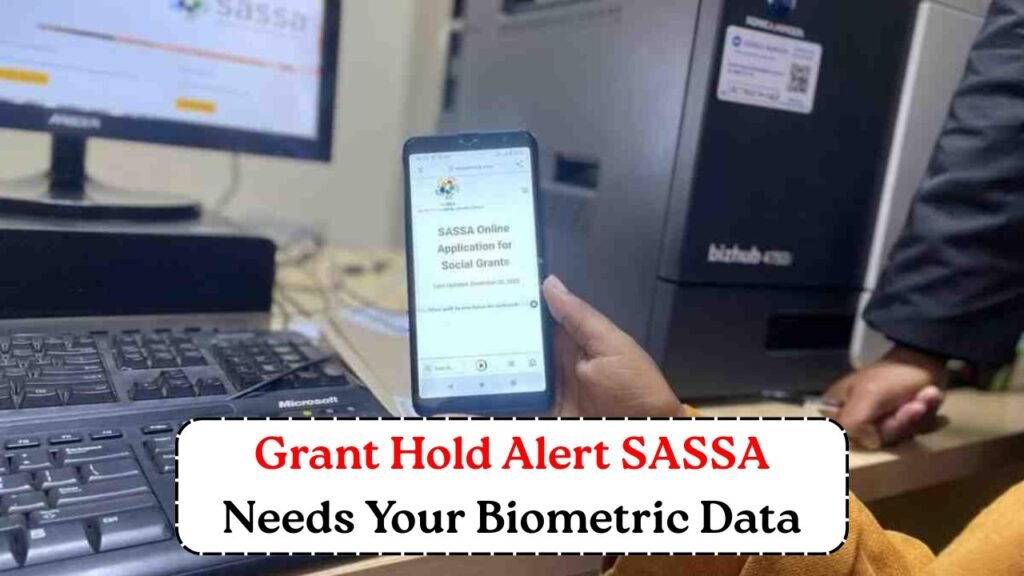SASSA Biometric Process 2025: As South Africa gears up for the 2025 implementation of the SASSA biometric process, beneficiaries are encouraged to familiarize themselves with the essential steps involved. This innovative system promises to streamline the process for receiving grants, enhancing both security and efficiency. With advancements in technology, SASSA aims to ensure that each transaction is more secure, reducing fraudulent activities and ensuring that grants reach the rightful recipients. The new biometric verification method will require recipients to provide specific information and adhere to certain procedures to continue receiving their benefits without interruption.

Understanding the SASSA Biometric Verification System
The SASSA biometric verification system is a significant shift from traditional methods, aiming to secure the distribution of social grants across South Africa. This system will utilize unique biological traits, such as fingerprints or facial recognition, to authenticate each beneficiary’s identity. As a security measure, the system ensures that only eligible individuals receive grants, minimizing the risk of fraud and misappropriation of funds. For beneficiaries, understanding the operation and requirements of this system is crucial. The process involves registering one’s biometric data at designated centers, where staff will guide beneficiaries through the necessary steps, ensuring that the information is safely and correctly captured. This new method not only enhances security but also simplifies the verification process, offering a more streamlined experience for all users.
Steps to Prepare for the 2025 SASSA Biometric Implementation
To prepare for the upcoming SASSA biometric implementation in 2025, beneficiaries need to undertake several key actions. First, individuals must ensure that their personal information with SASSA is up-to-date, including contact details and identification documents. Next, beneficiaries should be on the lookout for official announcements regarding registration dates and locations. It’s advisable for recipients to attend information sessions, which will provide detailed insights into the process and how to comply with new requirements. The actual registration involves visiting an authorized SASSA center, where beneficiaries will submit their biometric data, such as fingerprints or facial scans. This process is designed to be straightforward, with trained staff available to assist and answer any queries. By taking these preparatory steps, beneficiaries can ensure a smooth transition to the new system, avoiding any potential disruptions in their grant payments.
Key Benefits of the SASSA Biometric System for Beneficiaries
The introduction of the SASSA biometric system brings numerous benefits to beneficiaries, primarily in terms of security and convenience. One of the most significant advantages is the reduction in fraudulent claims, as the biometric verification process ensures that only legitimate recipients can access their grants. This technological advancement provides a layer of protection for beneficiaries, safeguarding their entitlements against identity theft and other fraudulent activities. Furthermore, the biometric system enhances the efficiency of grant distribution. With accurate and quick verification, beneficiaries experience shorter wait times during collection, making the process more convenient and less time-consuming. This improvement is particularly beneficial for those living in rural areas, where access to SASSA offices can be challenging. By prioritizing security and efficiency, the biometric system represents a significant step forward in modernizing South Africa’s social grant distribution.
Common Concerns and Solutions with SASSA Biometric Enrollment
As with any new system, the SASSA biometric enrollment process has raised several concerns among beneficiaries. One common worry is the potential for data privacy breaches. To address these fears, SASSA has implemented stringent security measures to protect personal information, ensuring that all biometric data is stored securely and used solely for verification purposes. Another concern is accessibility, particularly for elderly or disabled individuals who may face challenges in visiting enrollment centers. SASSA is actively working to mitigate these issues by providing mobile registration units and extending services to remote areas, ensuring that every beneficiary has the opportunity to enroll. Additionally, comprehensive educational campaigns are in place to inform and assist beneficiaries throughout the transition. By addressing these concerns proactively, SASSA aims to facilitate a smooth and inclusive rollout of the biometric system, ensuring that all beneficiaries can continue to receive their grants without disruption.



